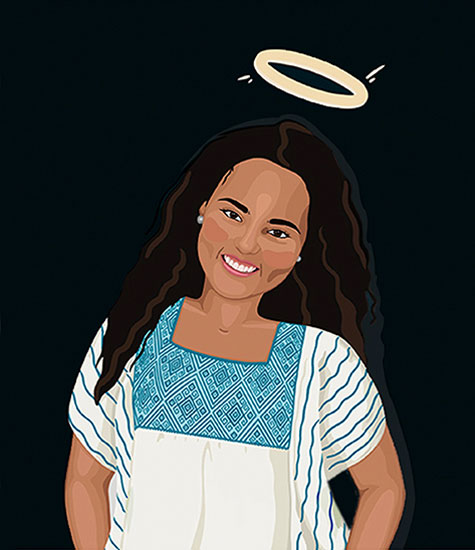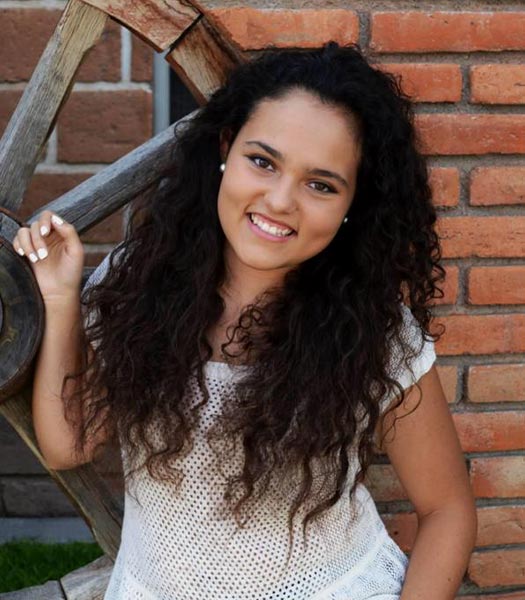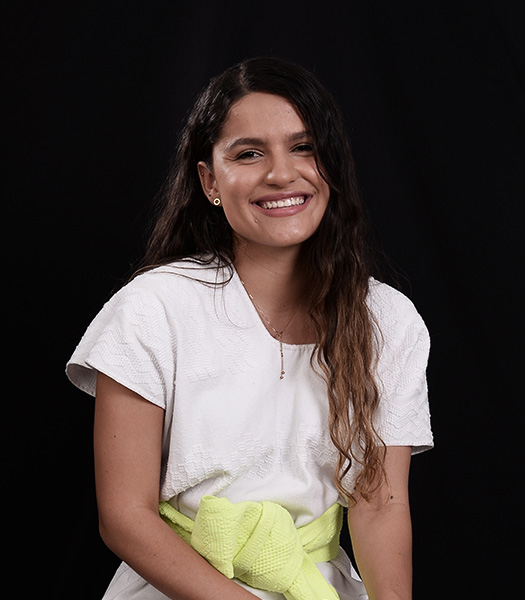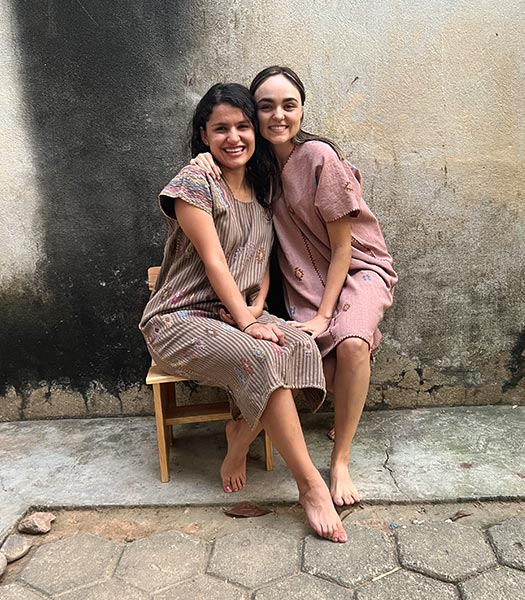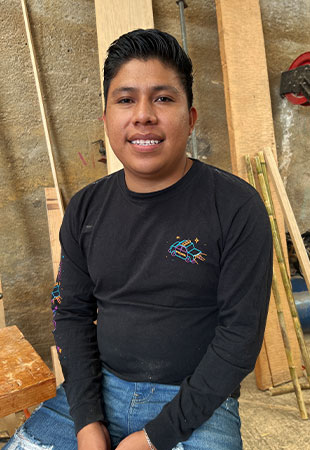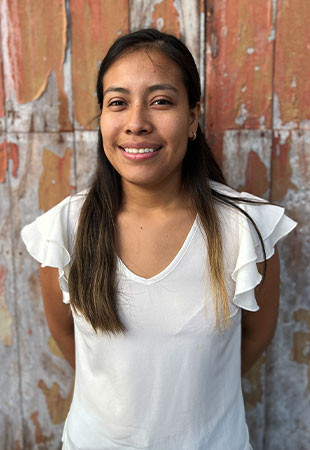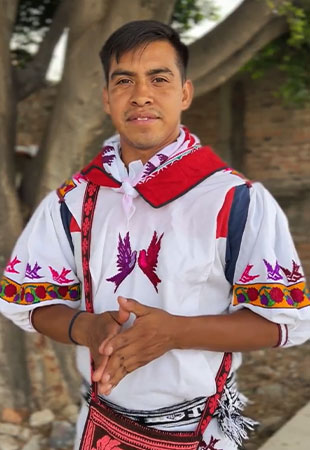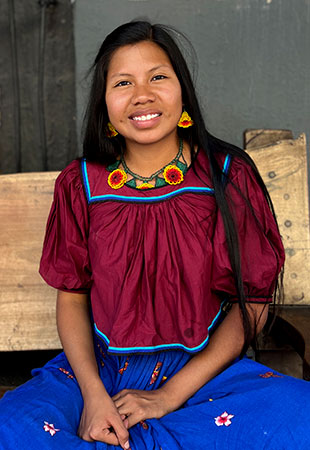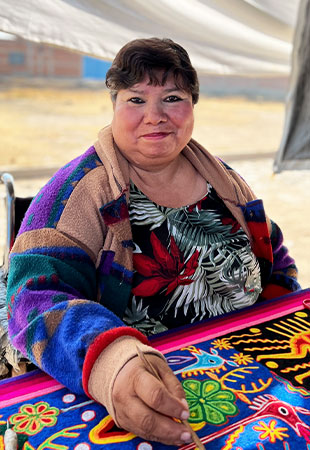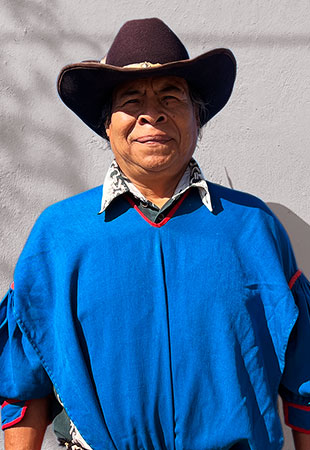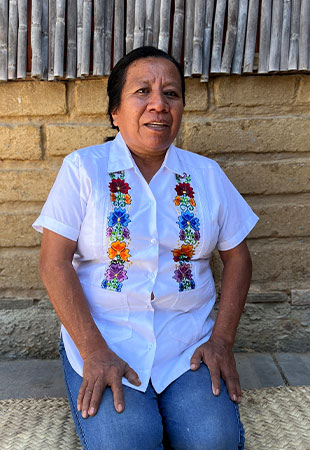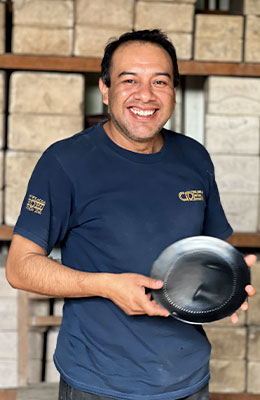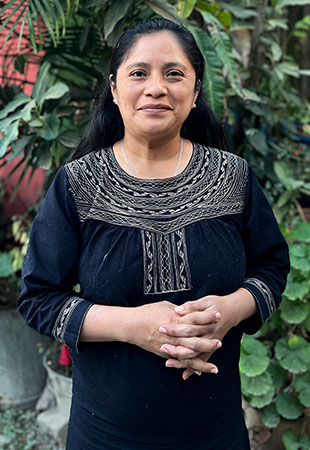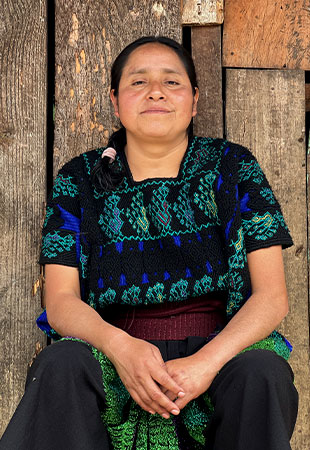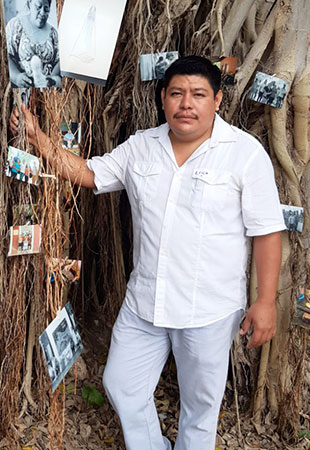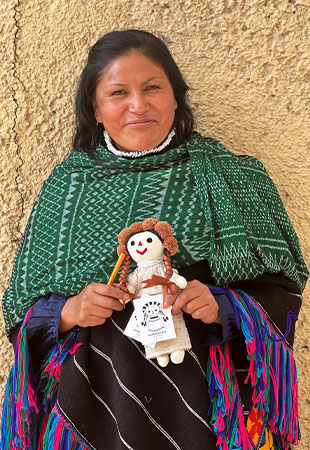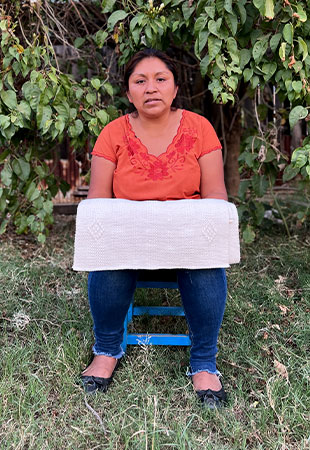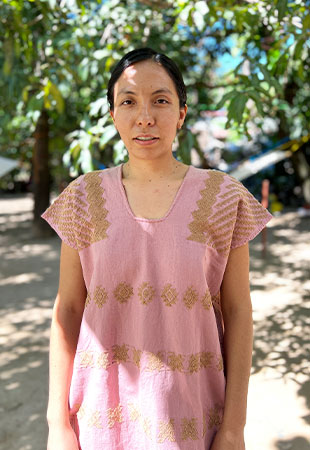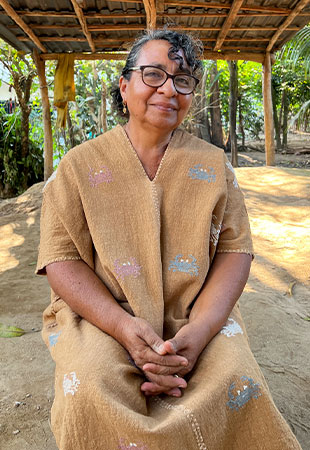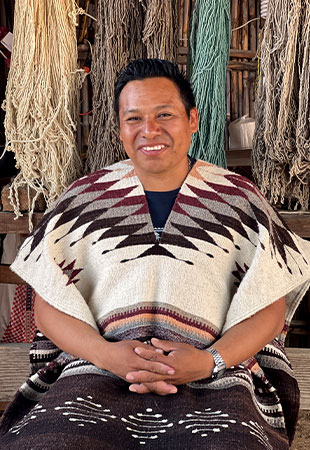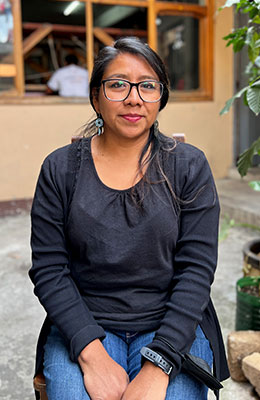We are a team dedicated to linking ethical and fair commercial opportunities with the design, production, and marketing of premium crafts.
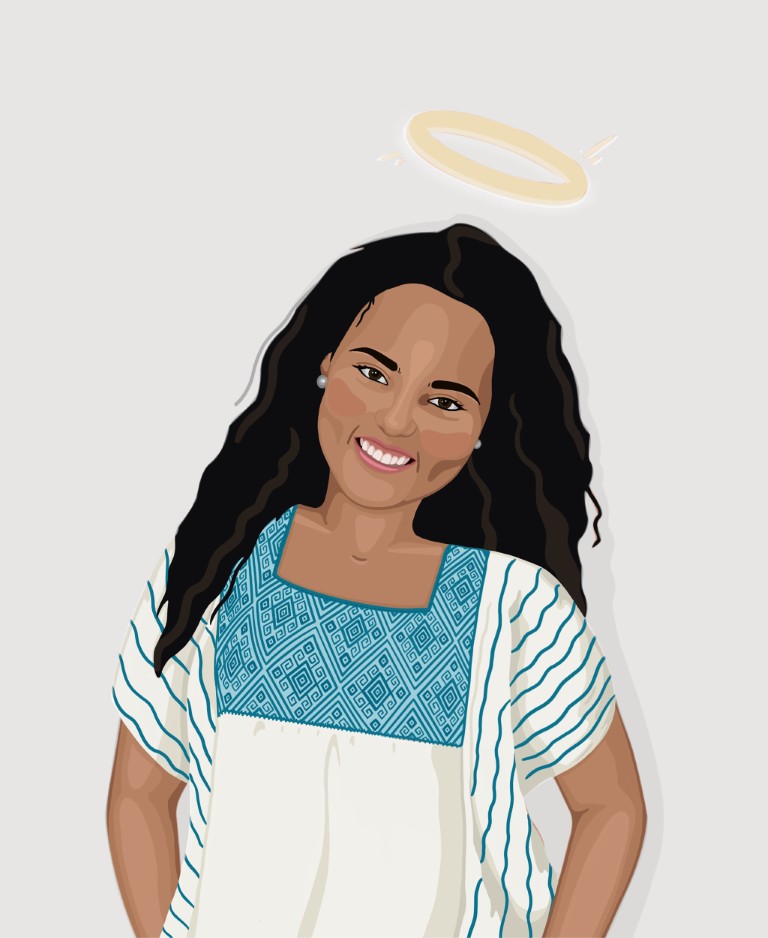
Mariana Bustamante
Founder
Mariana Bustamante, a woman with a vision and a deep love for Mexico, its culture, and traditions ("La Pava"), won a scholarship to fulfill her dream: to create a company that helps Mexican artisans "receive fair payment for their work and improve their quality of life." That's how "Mexikoo" was born. However, today La Pava accompanies us with her beautiful energy from a more special place.
"Tuux" means "pava" (turkey) in Maya, so Tuux Mexikoo means "Mexican Pava."
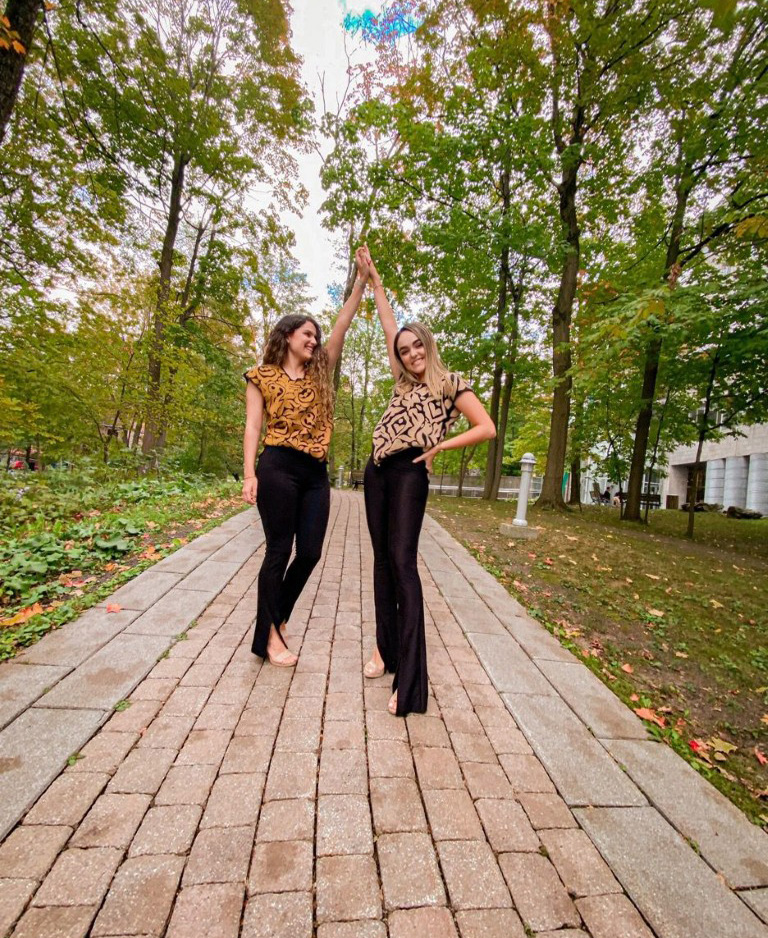
Tania Bustamante
Founder
Tania is a lawyer. Her sister's legacy was the reason she found in Tuux the passion and dedication to focus her dream on the social inclusion of the artisan community, thus promoting collective awareness.
She is passionate about creating a “before and after '' of Tuux Mexikoo through national and international recognition of artisanal techniques as an "unequaled contribution" to the market, thereby benefiting the artisan community and commercial allies (customers).
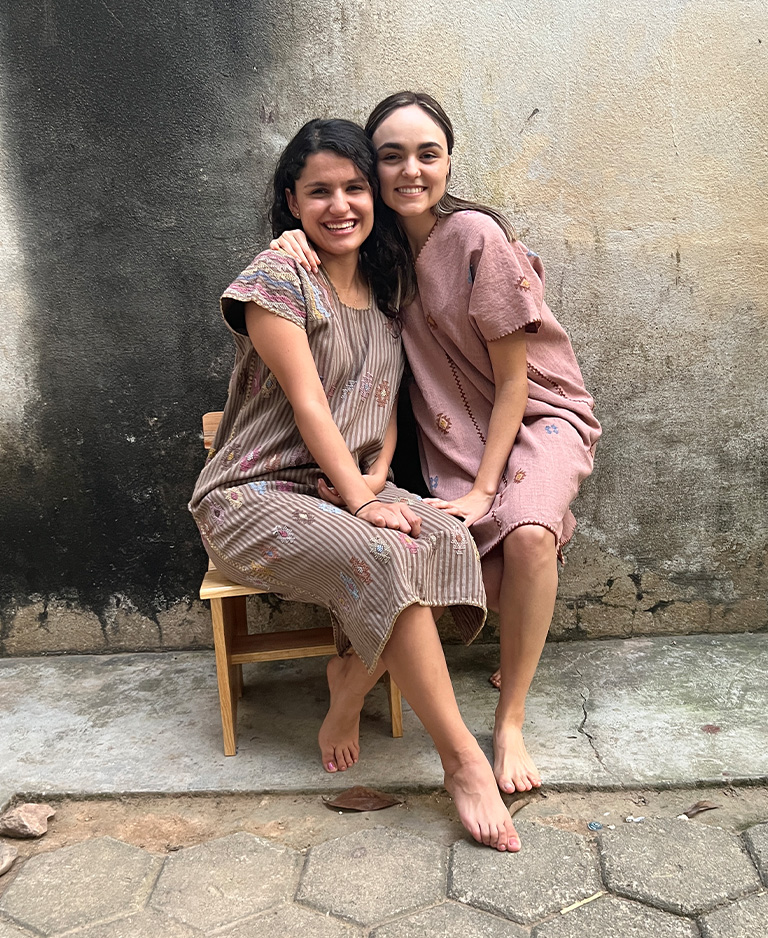
Cynthia Lopez
Founder
Cynthia is an industrial designer, passionate about human interaction and Mexican cultural expressions. She found her passion for making an impact after receiving certification in social innovation, and now she fulfills her dream every day as a co-founder of Tuux Mexikoo.
Cynthia firmly believes in a prosperous, equitable, and inclusive Mexico.
Tuux artisanal leaders
The Tuux family's artisanal leaders represent collectives that dedicate their efforts to keeping their communities' techniques, culture, and traditions alive.
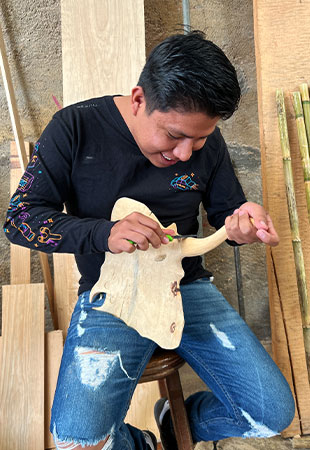
Marcos Hernandez
Alebrije
Marcos is 25 years old and belongs to a family where more than 6 people dedicate their efforts to the alebrije technique. For him, it is a dream to capture his cultural heritage in each piece, inspired by his family and everything he observes in his community. Marcos wants his pieces to reach the world so that more people can appreciate and learn about Mexican culture.
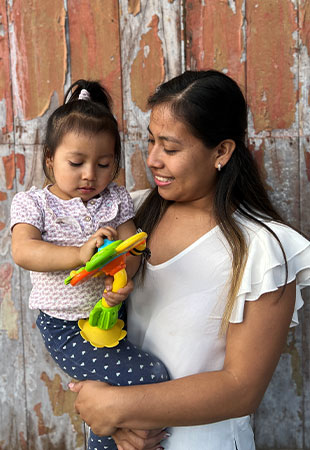
Leticia Vasquez
Alebrije
Lety started with the art of decorating alebrijes thanks to her grandfather's heritage over 40 years ago. Her parents, some uncles, and 2 of her sisters keep this art alive, which for her means preserving culture, as each person who acquires a piece carries a memory of her community to be shared with the world and for more people to know about them.
Lety is inspired by decorating the piece to make it beautiful. Her dream is to continue teaching and sharing how to infuse expression into each design with innovative colors and shapes so that the technique is not lost.
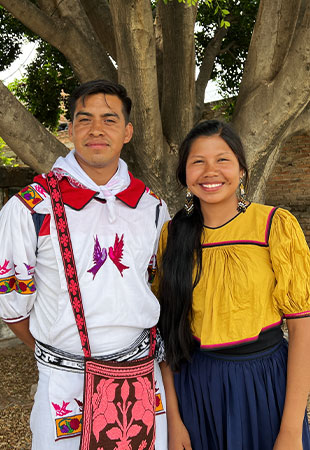
Isidoro Valdez
Beadwork
Isidoro is the son of a family lineage intertwined with Wixárika art. One of his uncles supported his siblings by practicing this technique, as they grew up without paternal figures.
Now, Isidoro's entire family works in this technique, which has driven them to improve and achieve a stable source of income, with the hope of keeping it alive.
Isidoro's dream is to experience different things, a new life where his work is recognized and exhibited worldwide.
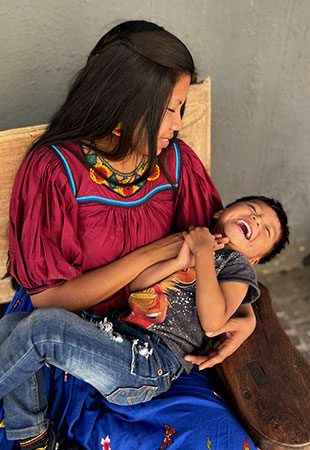
Esmeralda Hernandez
Beadwork
Esm and her siblings keep Wixárika art alive thanks to their parents, who achieved a better life through handicrafts. Esme enjoys expressing herself through Wixárika art so that people can understand and appreciate its meaning. Her inspiration comes from her tradition, culture, colors, and the motivation to know what keeps her family going. She dreams of having new experiences and innovating so that the technique is not forgotten.
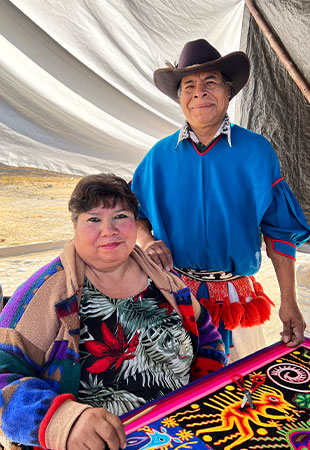
Margarita Tenorio
Yarnwork
Margarita has been practicing the Wixárika technique for over 30 years, and currently her husband and children are also dedicated to this art. They aim to make this technique a job like any other, striving to ensure that the results are the best possible. Margarita wants to have work and ensure that nothing is lacking.
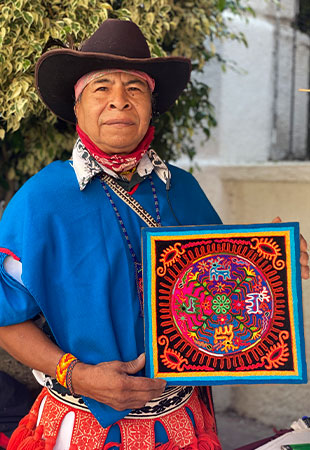
Rosendo Lopez
Yarnwork
Rosendo shares that the Wixárika technique has been passed down since the time of his grandparents, over 200 years ago. Currently, his children and wife keep this art alive, which is their pride. His dream is to have plenty of work to be able to buy land where they can live happily.
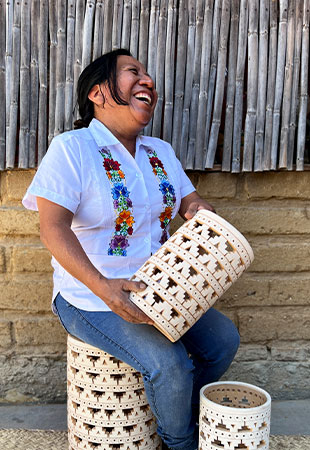
Bertha Zarate
White clay
Bertha is a proud member of the family that created the combination of clays to develop the technique of "white clay." She has been learning this technique for over 10 years, passed down through 10 siblings, who in turn transmit their knowledge to their descendants, dedicating efforts to preserve the technique.
For Bertha, dedicating herself to handicrafts is a source of pride as it becomes her legacy, leaving a mark on how to create the pieces, giving a different twist to the traditional clay (red and green) that her ancestors solely used for cooking.
She draws inspiration from nature, the sea, and the ruins of archaeological sites, which are reflected in each of her pieces.
Her dream is for the technique to endure as a craft heritage and to obtain a visa to showcase her art in the United States.
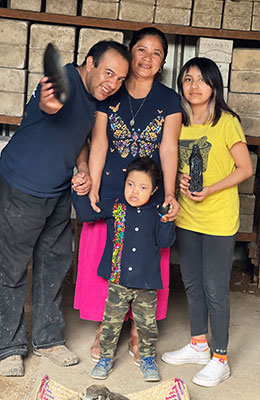
Luis Ortiz
Black clay
Luis has been in contact with clay since he was in his mother's womb. For him, preserving this technique represents honoring the ancestral heritage and wisdom embedded in the black clay technique. In this technique, Luis finds his treasure, a driving force to create stories and experiences, representing his love for his art, his wife, and children.
Luis wants handicrafts to be valued for the work, dedication, and talent behind each creation.
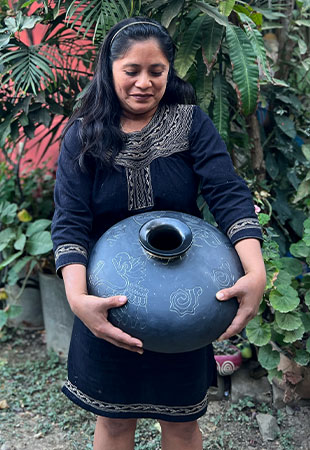
Sandra Mateo
Black clay
For Sandy, this technique has been passed down from her great-grandparents, grandparents, parents, and now to her children. For her, creating clay pieces is a way to let the mind speak through her feet as she kneads the clay and her hands as she shapes and designs each creation. Her parents, children, and husband have accompanied her on this journey from the beginning, as it keeps them active and eager to express their emotions.
She knows that she and her husband are essential for her 12-year-old daughter to continue learning and exploring her creativity, as well as for her 6-year-old son, who still enjoys playing with clay and feels great satisfaction upon completing a figure.
For Sandy, clay represents the fortune of having the pride to create crafts and capture the history and knowledge of her ancestors, combined with her own expression and style. Her dream is to showcase her work through love, culture, and tradition, so it can be valued and endured over time.
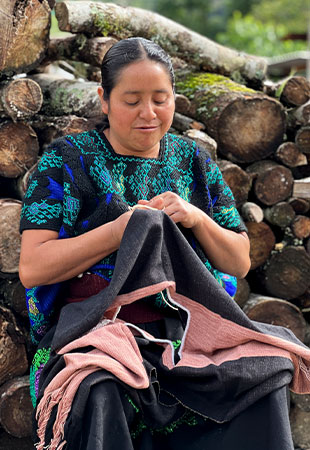
Zenaida Hernandez
Tzotzil embroidery
Zenaida has been practicing hand embroidery for 21 years, and together with all the women in her community, they keep the technique alive. For her, it means remembering her roots, culture, traditions, and traditional clothing. Due to their living conditions, she was inspired to seek ways to innovate in handicrafts, thus empowering other women.
Zenaida aims to generate economic income to improve the living conditions of artisan families in her community.
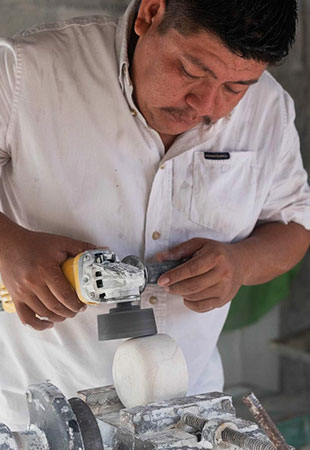
Erick Dominguez
Mexican stone carving
Erick was the first artisan in his family and started practicing this technique out of curiosity, as a form of expression, to continue spreading Maya culture. With over 17 years as an artisan, he is an expert in the technique. He is currently teaching it to the next generation. For him, being able to transform a stone into a utilitarian or decorative object brings an indescribable satisfaction. He is inspired by innovation, working on new pieces, and meeting people who share a passion for art or handicrafts. His dream is for the technique to continue, to keep improving every day, and for his pieces to reach the world.
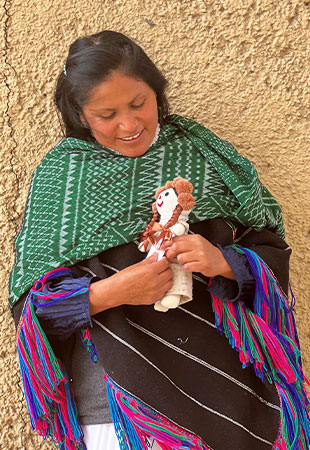
Paula Rodriguez
Lele dolls
Paula comes from a family where Lele dolls have represented their roots for over 70 years. Each doll is crafted with love and affection. She seeks to convey to people that with just a Lele doll, one can find happiness. She wishes to challenge herself and create new designs that keep their roots alive.
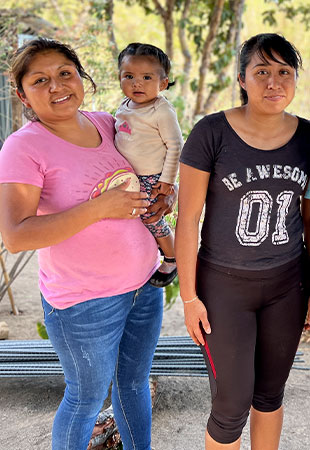
Eliza Mendoza
Backstrap loom
Eliza shares that waist loom weaving has been a part of her family for as long as she can remember. They don't have an exact date for this ancestral heritage; many family members, like her, have dedicated themselves to this technique for generations. For Eliza, the loom represents identity, pride, and the ability to express emotions and inspiration in each piece. She finds inspiration in the colors of nature, her surroundings, and, above all, in the heritage passed down by their ancestors. She greatly appreciates when her customers and tourists admire her work, as it motivates her to create new and unique pieces. Her dream is to have a place where her pieces can be better appreciated, where more people can learn about their handicrafts, and to travel to other places to promote her work. She wants to have a gallery in her home to welcome many people.
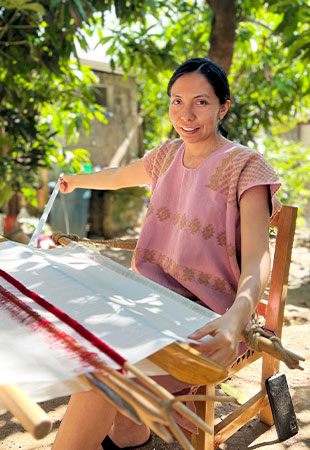
Yessenia Álavez
Backstrap loom
Yess shares that her mother started weaving when she was 6 years old, and she taught Yessenia when she turned 12. Her sister also shares a love for this technique. She is inspired by the knowledge that her creations can reach other states or countries, and she wishes for her garments to be recognized in major markets worldwide. She also dreams of attending cultural exhibitions.
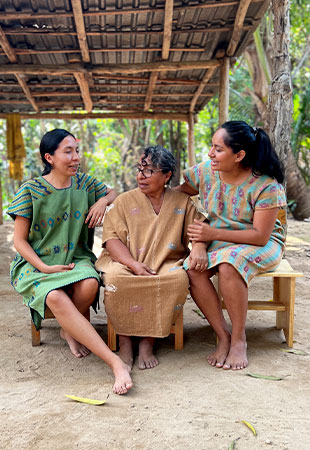
Emperatriz Garcia
Backstrap loom
Emperatriz learned to make huipiles 56 years ago, continuing a knowledge passed down through generations in her family. Two other people in her immediate family share her love for this art. For her, it represents an ancestral heritage from her grandparents, and her inspiration lies in innovating to create new pieces.
Emperatriz dreams of her huipiles being known in many countries.
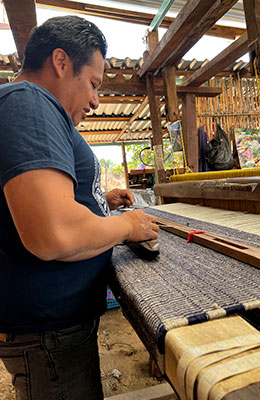
Rolando Lazo
Pedal loom
Rolando is the third generation preserving the foot pedal loom in his family, although he knows that his ancestors were doing it long before. There are 18 people behind each of these pieces, including adults, seniors, students, and children as recreational learners. He mentions that being an artisan means transmitting your happiness, sadness, and daily joys, opening the doors to being part of their creations. He greatly values culture, traditions, and wisdom. He would love to learn other existing loom techniques.
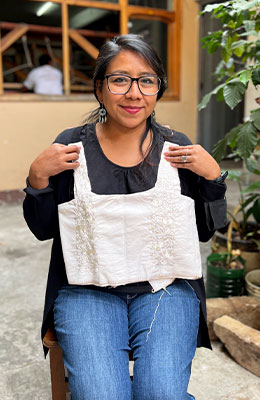
Verónica Ramírez
Pedal loom
Vero mentions that the foot pedal loom has been around for 80 years. The loom has been modified, and some techniques that are no longer used have been rescued. In her family, there are six people dedicated to preserving the weaving and various working techniques. She mentions that weaving is an extraordinary legacy as her children represent the fourth generation dedicated to this noble art. It has allowed them to dress, feed themselves, and learn about their culture through history.
She is looking to do new things, to learn new techniques that inspire her to create new projects and to promote a taste for textiles made on a treadle loom. Her dream is to have a gallery with a workshop, where she can learn to weave, dye and make more creative finishes.
We collaborate together because we strongly believe that
co mmunity|creation|operation|mmerce (fair)
are the key to breaking the gaps of inequality.
Our history
In 2019, Mariana Bustamante ("La Pava") won a scholarship to fulfill her dream of creating a company that helps Mexican artisans "receive fair payment for their work and improve their quality of life." Thus, "Mexikoo" was born. However, today La Pava accompanies us with her beautiful energy from a more special place.
The legacy of her sister and her dream of linking ethical and fair commercial opportunities for artisans was the reason Tania revived the project by complementing the name "Mexikoo" with "Tuux." Thus, "Tuux Mexikoo" means "Mexican Pava" in Maya, in honor of the original founder.
On the other hand, Cynthia had the opportunity to collaborate with a group of women artisans and witnessed their knowledge and determination to break the gaps of inequality. They only needed the right tools to achieve it. That's where she decided to focus on social innovation and came across Tuux Mexikoo.
Although La Pava's efforts laid the foundation for Tuux Mexikoo, it was with Tania and Cynthia that the dream began to turn into reality, one step at a time.
Some remarkable moments
Beginnings
It is difficult for the founders to pinpoint the exact date when their passion and interests were born, as they grew up in an environment where they have admired the rich cultural heritage of Mexico from their early years.
Incubation
In February 2019, Mariana ("La Pava") entered an incubation process at Tec de Monterrey, Chihuahua campus, in the Orion program to give shape to what was once her dream. At the same time, on the other side of the ocean, Tania helped solidify the interest of the international market, leveraging her stay in Barcelona to support her sister's project.
Pause
Unexpectedly, Mariana undergoes a transformation as a creative energy, leaving her project on hold until it is taken up by Tania.
Launch
From the echoes of Mariana's heart, Tania takes up the vision and arrives in Guadalajara in September 2019 to continue the incubation process in Orion, giving up professional opportunities at a globally renowned law firm. At this point, Tania decides to complement the name "Mexikoo" with "Tuux." Therefore, Tuux Mexikoo means "Mexican Turkey" in Maya, as a tribute to the original founder.
Artisans vinculation
Tania personally approached different artisans across Mexico who truly connected with the vision of Tuux Mexikoo. Each story is different, but undoubtedly, they are all special.
The team grew
Cynthia and Tania met in the social incubator at Tec de Monterrey Guadalajara in January 2020, and after a month of collaboration, the COVID-19 pandemic forced them to continue their plans from home. Both Tania and Cynthia graduated in the same year, Tania in Law and Cynthia in Industrial Design.
Capital seed
As part of the international competition "Social Business Creation" (SBC) at HEC Montreal, one of the deliverables was to create a crowdfunding campaign with the aim of financing the first "samples and shipments" to attract initial customers. They received support from over 60 donors who connected with the vision of Tuux Mexikoo, which was a key factor in starting the commercial area as it provided them with seed capital.
Award
After 6 months of the SBC competition, where 99 teams participated, 80 officially registered, 71 passed the 1st round, 49 advanced to the 2nd round, and only 47 teams were invited to the 3rd round held in Montreal, Canada.
Tuux Mexikoo was selected as one of the top 5 projects and received the award for "social business concept."
Full time
Starting in 2021, the dream began to come true through partnerships with luxury hotels and partners who are interested in honoring Mexico's cultural heritage while sharing the unique features that Tuux offers in the social and commercial spheres. This allowed Tuux to establish itself in the market and expand its reach, creating opportunities to showcase artisanal creations and traditions to a wider audience. The collaborations with luxury hotels and like-minded partners not only provided a platform for Tuux to showcase its products but also helped in promoting fair trade practices and supporting the community development projects that Tuux is committed to.
Foundation
On June 16, 2022, Tuux Mexikoo was legally established as a social enterprise with the purpose of honoring the artisanal legacy. This step formalized the commitment of Tuux Mexikoo to its mission and allowed it to operate as a recognized entity in the business world. By becoming a formal legal company, Tuux Mexikoo gained the ability to enter into contracts, engage in commercial activities, and further expand its impact in supporting artisans and promoting the cultural heritage of Mexico.
Legacy
In July 2022, Mariana Bustamante, S.C. Foundation was established, providing a platform (which is still in the process of being launched) for carrying out strengthening projects for the entire artisan community.The foundation serves as an avenue to support and empower artisans, providing them with resources, training, and opportunities for growth. Through the foundation, it is aimed to create sustainable and impactful initiatives that enhance the lives and livelihoods of the artisans, preserving and promoting their cultural heritage for future generations.
Currently
Tuux Mexikoo is in the process of obtaining the B Corporation certification, showcasing its commitment to social and environmental sustainability. By seeking this certification, Tuux Mexikoo aims to join a global movement of businesses that prioritize positive impact alongside profit.

